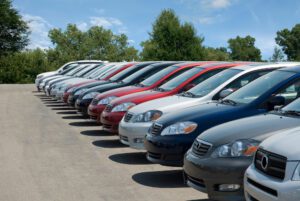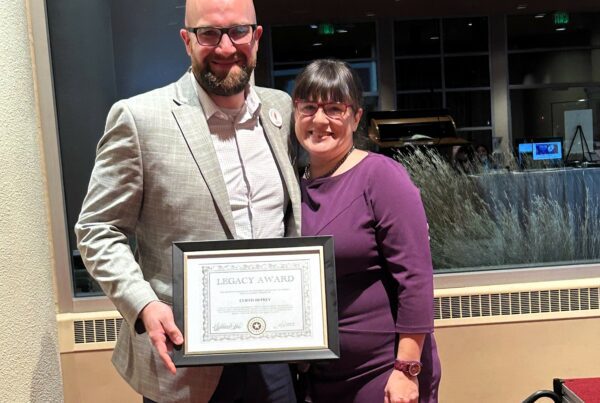
As we proceed through 2023, many individuals are facing a concerning trend: rising insurance rates for both car and home insurance. Across the nation, auto and home insurance premiums have increased substantially over the past couple of years due to a variety of factors. This has left consumers confused and frustrated, especially those who haven’t even had a claim in recent years. In this article, we will explore the reasons behind the surge in insurance rates and ways to save on your insurance costs.
Factors Affecting Home and Auto Insurance Rates
Several factors contribute to the increase in insurance rates for both car and home insurance. Some of these factors are more apparent, like adding another vehicle to your plan which will increase your rates, while others may be less obvious to consumers. Let’s take a closer look at these influential elements:
Increasing Frequency and Severity of Natural Disasters
One of the primary drivers of rising insurance rates for both car and home insurance is the increasing frequency and severity of natural disasters, such as hail storms, hurricanes, wildfires, floods, and tornadoes. These catastrophic events result in extensive property damage and loss, prompting insurance companies to pay out substantial claims. In response, insurers are adjusting their premiums to account for the growing risk and financial losses they are incurring.
Home and car owners residing in regions highly susceptible to natural disasters, such as the southern coasts of Florida prone to hurricanes, will experience the most substantial insurance premium hikes. However, even if you live elsewhere but are insured by a company operating in disaster-prone areas, you might still face an increase in rates as insurance companies look to make up for their losses.
Rising Legal and Medical Costs
Auto and home insurance commonly include coverage for medical and legal expenses (liability coverage, personal injury protection (PIP), etc.). The increasing cost of medical treatment and legal costs contribute to higher insurance claims, leading to higher premiums for policyholders.
Escalating Repair and Replacement Costs
In recent years, the costs associated with repairing or replacing parts in vehicles and homes have been on the rise. This is due to several reasons:
- Modern cars are equipped with advanced technologies, such as sensors, cameras, and other safety features, which make repairs more complex and costly.
- Construction and materials used in homes have become more sophisticated, resulting in higher repair and replacement expenses.
- Supply chain disruptions have affected the availability and cost of repair services for homes and vehicles, leading to increased insurance costs to cover potential repair expenses.
Due to these increases in cost, insurance companies are facing inflated claims payouts for vehicle repairs and property restoration. To cover these elevated costs, insurers adjust their premiums, passing on the increased financial burden to policyholders.
Distracted Driving and Traffic Accidents
In the realm of car insurance, distracted driving has become a significant concern in recent times. With the widespread use of smartphones and other electronic devices, drivers are more prone to distractions, leading to a higher number of accidents on the roads. Additionally, the increased prevalence of ride-sharing services and the booming gig economy have also contributed to more vehicles on the streets, leading to potential congestion and higher accident rates.
Insurance Telematics and Discounts
Advancements in technology have introduced telematics to the insurance industry. Telematics devices, which are often installed in vehicles, track driving behavior, including speed, braking patterns, and adherence to traffic rules. This data helps insurers assess risk more accurately and provide personalized insurance rates based on individual driving habits.
While telematics offers the potential for discounted insurance rates for safe drivers, it can also lead to higher premiums for drivers deemed higher risk based on their driving patterns. As more insurance companies adopt telematics, policyholders who are classified as higher risk may experience rate increases.
Increasing Instances of Fraud
Insurance fraud is a persistent issue plaguing the insurance industry. Fraudulent claims, staged accidents, inflated property damage, false reports of theft, and other dishonest activities add significant financial strain to insurance companies. To mitigate the impact of fraud, insurers raise premiums to offset the losses incurred from paying out on fraudulent claims.
Location
Living in or relocating to an area with a higher frequency of accidents (such as a large city) or prone to natural disasters (like the southern coast of Florida as previously mentioned) can significantly affect your insurance rates. Insurance companies heavily factor in the risk associated with your location when determining premiums.
Ways to Save on Car and Home Insurance Premiums
Given the surge in insurance rates, consumers are looking for ways to save on their car and home insurance premiums. Here are some strategies to help mitigate the impact of rising costs:
- Shop Around: Since national carriers have to hedge risks across the board, everyone ends up paying for mistakes and uninsurable risks in different regions, causing rates to rise. To save on insurance, it’s essential to shop around and compare rates from various carriers. Utilizing an independent insurance agent can streamline this process, as they can quickly obtain quotes from multiple insurers at no cost to you.
- Maintain a Good Driving Record: Though this may seem obvious, your driving history directly influences your insurance rates. Practicing patient, smart, and defensive driving can help you avoid tickets and reckless accidents, leading to improved eligibility for better rates and discounts.
- Improve Your Credit Score: Insurers often consider credit scores when determining insurance rates. Taking time to improve your credit score can lead to lower premiums.
- Reduce Driving Mileage: Driving less can lower your risk profile and potentially lead to reduced insurance rates, especially if you use telematics. Consider carpooling, using public transportation, or working from home if possible.
- Choose Your Vehicle Wisely: The car you drive impacts your insurance rates. Newer and more expensive vehicles may lead to higher premiums, so researching insurance costs before purchasing a vehicle can help you make an informed decision.
Conclusion
The surge in insurance rates for car and home insurance is influenced by a combination of factors, ranging from rising repair costs to an increase in natural disasters. As policyholders, it’s essential to stay informed about these trends and potential risk factors, so you can take proactive steps to save on your insurance premiums.
By shopping around, maintaining a good driving record, improving your credit score, reducing driving mileage, and carefully choosing your vehicle, you can hopefully lower your insurance costs. Furthermore, enlisting the help of an independent insurance agent can simplify the process and ensure that you have the most suitable coverage while navigating the ever-changing landscape of insurance.







